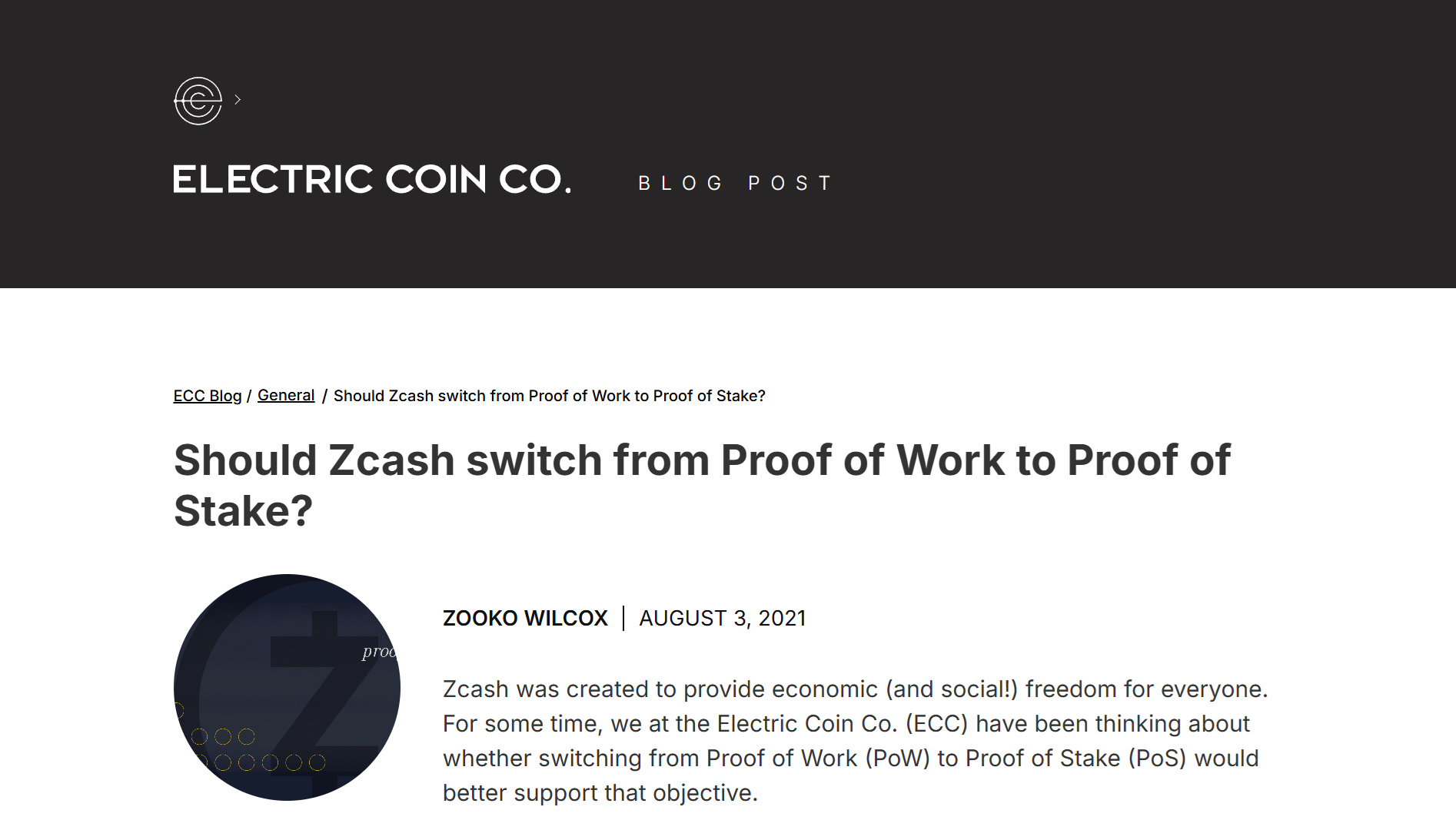2024-08-12

Zcash is a privacy coin that was
launched in 2016, designed to provide enhanced privacy and anonymity for its
users.
Zcash has a fixed supply of 21 million coins. It utilizes a proof-of-work (PoW) algorithm similar to Bitcoin, where miners compete to solve complex cryptographic problems.
The first miner to find the solution is
allowed to open a new block and receives the block reward.
The PoW algorithm used by Zcash is
Equihash, which is a memory-hard algorithm based on the Generalised Birthday
Problem.
This algorithm is designed to be
resistant to specialized mining hardware, promoting more decentralized mining
by individuals using standard computer hardware.
Block rewards in Zcash follow a halving
mechanism similar to Bitcoin, occurring approximately every four years, which
helps to ensure a deflationary supply model
Zcash founder, Zooko Wilcox, wants
protocol’s upgrade to a hybrid proof-of-stake system after joining Shielded
Labs as the new head of product
He wants to accelerate the protocol’s
transition to a hybrid PoS system.
Shielded Labs is an independent,
Swiss-based organization that was founded with the aim of supporting and
enhancing the Zcash ecosystem.
The organization seeks to address areas
within the Zcash community that other major entities, such as the Electric Coin
Company (ECC) and the Zcash Foundation, might not prioritize due to resource
constraints or jurisdictional limitations.
Shielded Labs focuses on developing
tools and initiatives that bolster Zcash's privacy features and overall network
sustainability.
After eight years of proof-of-work
mining, Zcash is looking to upgrade to a hybrid PoS system.
This upgrade is expected to ease the
downward pressure on Zcash’s price due to the creation of new ZEC coins.
The improvements include implementing
the Zcash Sustainability Fund and upgrading to “Crosslink,” which is a hybrid
PoW and PoS protocol.
The benefits highlighted are enabling
staking for ZEC holders, providing finality to protect against rollback
attacks, reducing transaction times, and allowing safer two-way bridges to
other networks.
Shielded Labs has received donations
from Zcash holders and supporters, including prominent figures like Cameron and
Tyler Winklevoss and Vitalik Buterin, to help expand its initiatives and
prioritize the development and implementation of Crosslink.

Should Zcash switch from Proof of Work to Proof of Stake? - Electric Coin Company
Zcash is transitioning from a
proof-of-work (PoW) to a proof-of-stake (PoS) consensus mechanism.
The Electric Coin Company (ECC), the
developer behind Zcash, has outlined a plan for this transition.
Transition Plan
The transition to PoS is expected to
take place over the next few years, with a focus on a phased approach.
Initially, a hybrid PoW/PoS protocol might be introduced, allowing the new PoS
component to be tested on the mainnet before fully relying on it.
Technical Migration
The migration process will require
support from Zcash users, a legitimate governance process, and a well-designed
technical migration process.
ECC is focused on product-led
development of a hybrid PoW-PoS protocol, without disrupting ongoing efforts on
other projects.
Benefits of PoS
The move to PoS is anticipated to
reduce the environmental impact of the blockchain and eliminate downward price
pressure on Zcash. It will also enable users to earn Zcash through staking
rewards and allow for stakeholder governance.
Finality Layer
A stepping stone to PoS in Zcash is the
Trailing Finality Layer (TFL), which aims to enable finality and PoS in a
minimally disruptive manner. Finality ensures that once a block is finalized,
it cannot be rolled back, which can reduce delays for certain use cases like
centralized exchange deposit wait times.